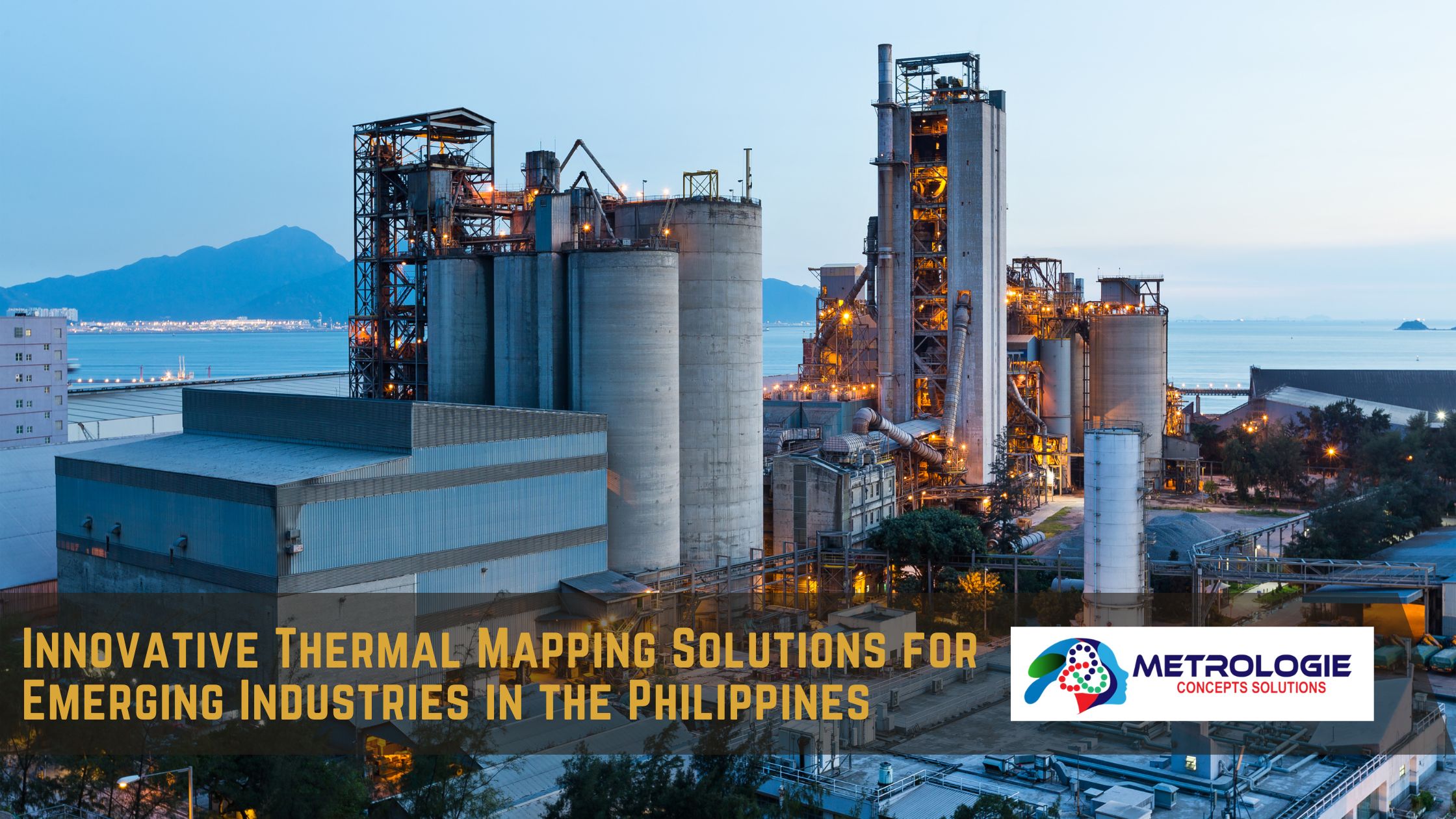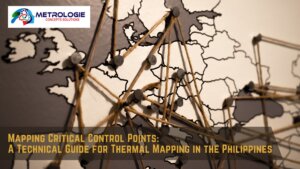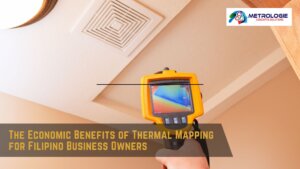Introduction
In recent years, the Philippines has seen a surge in the growth of emerging industries, driven by technological advancements and increased demand for high-quality products and services. Among these innovations, thermal mapping has emerged as a critical tool for businesses seeking to optimize processes, ensure compliance, and enhance the quality of their products. This article delves into the various applications of thermal mapping solutions in emerging industries within the Philippines, highlighting their benefits, challenges, and future prospects.
1. Understanding Thermal Mapping
a. What is Thermal Mapping?
Thermal mapping is the process of assessing and documenting temperature distributions within a specific environment or equipment over time. It involves using thermal imaging technology, sensors, and data analysis software to create detailed temperature profiles. These profiles help identify hot and cold spots, ensuring that temperature-sensitive products are stored, transported, and manufactured within acceptable limits.
b. Importance of Thermal Mapping
Thermal mapping is essential for several reasons:
- Quality Assurance: Maintaining optimal temperature ranges is critical for preserving the integrity of temperature-sensitive products, such as pharmaceuticals and food items. Thermal mapping ensures that these products remain effective and safe for consumers.
- Regulatory Compliance: Many industries are subject to strict regulations regarding temperature control. Thermal mapping helps businesses demonstrate compliance with these regulations, avoiding penalties and potential legal issues.
- Process Optimization: By identifying temperature inconsistencies, businesses can optimize their processes, improving efficiency and reducing waste.
2. Applications of Thermal Mapping in Emerging Industries
The Philippines is home to various emerging industries where thermal mapping solutions are making a significant impact. Below, we explore some of these industries and how they are leveraging thermal mapping technologies.
a. Pharmaceutical Industry
The pharmaceutical industry is one of the most critical sectors requiring precise temperature control. In the Philippines, thermal mapping is being utilized in several key areas:
- Cold Chain Management: Pharmaceuticals often require strict temperature control during storage and transportation. Thermal mapping ensures that products such as vaccines and biologics remain within the required temperature ranges, preventing spoilage and ensuring efficacy.
- Manufacturing Processes: Thermal mapping is used during the manufacturing of drugs to monitor temperatures in reactors, storage tanks, and other critical equipment. This ensures that processes are carried out under optimal conditions, resulting in higher product quality.
b. Food and Beverage Industry
The food and beverage sector is another area where thermal mapping plays a vital role:
- Storage Facilities: Food safety regulations require that perishable items be stored within specific temperature ranges. Thermal mapping helps monitor and document these temperatures, ensuring compliance with safety standards.
- Transportation: During transit, thermal mapping ensures that food products maintain the required temperatures, preventing spoilage and preserving quality.
c. Electronics Manufacturing
As electronics manufacturing continues to grow in the Philippines, thermal mapping is becoming increasingly important:
- Quality Control: Thermal mapping helps monitor temperatures during production processes, such as soldering and component assembly. Ensuring optimal temperature conditions helps prevent defects and improves overall product quality.
- Equipment Monitoring: By tracking the temperature of machinery and equipment, manufacturers can prevent overheating and potential failures, leading to improved operational efficiency.
d. Agriculture and Horticulture
In the agriculture sector, thermal mapping offers several advantages:
- Greenhouse Monitoring: Farmers use thermal mapping to monitor temperatures within greenhouses, ensuring optimal conditions for plant growth. This data allows for timely adjustments to heating or cooling systems.
- Livestock Management: Monitoring the temperature of livestock housing is crucial for animal welfare. Thermal mapping helps farmers maintain appropriate conditions, reducing stress and improving overall health.
3. Benefits of Thermal Mapping Solutions
The adoption of thermal mapping solutions in emerging industries offers numerous benefits, including:
a. Improved Quality Control
By providing detailed temperature data, thermal mapping allows businesses to maintain strict quality control standards. This leads to fewer defects, higher product quality, and increased customer satisfaction.
b. Enhanced Efficiency
Thermal mapping identifies areas of inefficiency within processes, allowing businesses to optimize their operations. This can result in reduced energy consumption, lower costs, and increased productivity.
c. Regulatory Compliance
Compliance with industry regulations is essential for avoiding fines and maintaining a good reputation. Thermal mapping provides the necessary documentation to demonstrate adherence to temperature control standards.
d. Risk Mitigation
Identifying temperature anomalies early allows businesses to address potential issues before they escalate into more significant problems. This proactive approach helps minimize risks related to product loss or quality degradation.
4. Challenges in Implementing Thermal Mapping Solutions
While thermal mapping offers numerous benefits, there are challenges that businesses must overcome when implementing these solutions:
a. Initial Costs
Investing in thermal mapping technology can be expensive, particularly for small and medium-sized enterprises (SMEs). However, the long-term benefits often outweigh the initial costs.
b. Training and Expertise
Properly utilizing thermal mapping technology requires trained personnel who understand how to operate the equipment and analyze the data effectively. Businesses may need to invest in training programs to ensure that staff can leverage these solutions to their fullest potential.
c. Integration with Existing Systems
Integrating thermal mapping solutions into existing processes and systems can pose challenges. Businesses must ensure that the new technology works seamlessly with their current operations to maximize its effectiveness.
5. Future Prospects for Thermal Mapping in the Philippines
As the demand for quality and safety continues to grow in emerging industries, the role of thermal mapping is expected to expand. Several trends indicate a promising future for thermal mapping solutions in the Philippines:
a. Increased Automation
The rise of automation in various industries will drive the need for advanced thermal mapping solutions. Automated monitoring systems can continuously track temperatures, providing real-time data to enhance decision-making and operational efficiency.
b. Sustainability Initiatives
With a growing focus on sustainability, industries are increasingly seeking ways to reduce waste and optimize resource use. Thermal mapping can help businesses identify inefficiencies and implement more sustainable practices.
c. Technological Advancements
Advancements in thermal imaging technology, sensors, and data analytics will continue to enhance the capabilities of thermal mapping solutions. As technology evolves, businesses will benefit from more accurate and efficient temperature monitoring.
d. Growing Awareness of Food Safety and Quality Standards
As consumers become more aware of food safety and quality issues, industries will need to adopt robust thermal mapping solutions to meet regulatory requirements and consumer expectations. This shift will drive demand for thermal mapping technology across various sectors.
6. Case Studies of Successful Thermal Mapping Implementation
To illustrate the practical applications and benefits of thermal mapping solutions, we can look at case studies of businesses in the Philippines that have successfully implemented these technologies.
a. Case Study 1: A Pharmaceutical Company
A leading pharmaceutical manufacturer in the Philippines adopted thermal mapping solutions to enhance its cold chain management. By implementing a comprehensive thermal mapping strategy, the company was able to:
- Monitor temperatures throughout the storage and transportation process.
- Reduce product spoilage rates by 30%.
- Achieve compliance with stringent regulatory requirements, enhancing its reputation in the industry.
b. Case Study 2: A Food Processing Plant
A food processing plant recognized the need for effective temperature monitoring in its production and storage facilities. By investing in thermal mapping solutions, the plant was able to:
- Identify temperature inconsistencies that had previously gone unnoticed.
- Implement corrective actions that reduced energy consumption by 15%.
- Improve product quality and shelf life, leading to increased customer satisfaction.
c. Case Study 3: An Electronics Manufacturer
An electronics manufacturer in the Philippines faced challenges related to overheating during production. By adopting thermal mapping technologies, the company successfully:
- Monitored temperatures in critical areas of the production line.
- Reduced the incidence of defects caused by temperature-related issues by 25%.
- Enhanced overall operational efficiency, resulting in cost savings.
7. Best Practices for Implementing Thermal Mapping Solutions
For businesses looking to adopt thermal mapping solutions, following best practices can ensure successful implementation:
a. Conduct a Needs Assessment
Before investing in thermal mapping technology, businesses should conduct a needs assessment to identify specific requirements and objectives. Understanding the unique challenges of your industry will guide your choice of equipment and solutions.
b. Choose the Right Technology
Selecting the appropriate thermal mapping technology is crucial. Consider factors such as accuracy, data storage capabilities, and compatibility with existing systems. Collaborating with reputable vendors can help ensure that you choose the best solutions for your needs.
c. Train Personnel
Proper training for staff is essential for maximizing the effectiveness of thermal mapping solutions. Invest in training programs that cover equipment operation, data analysis, and troubleshooting.
d. Establish Protocols for Data Analysis
Develop protocols for analyzing thermal mapping data. This may include setting thresholds for acceptable temperature ranges and outlining procedures for responding to temperature anomalies.
e. Continuously Monitor and Improve
Implement a system for continuous monitoring and improvement. Regularly review thermal mapping data and make necessary adjustments to processes and protocols to enhance efficiency and quality.
Conclusion
As emerging industries in the Philippines continue to grow, innovative thermal mapping solutions will play a crucial role in ensuring product quality, regulatory compliance, and operational efficiency. By understanding the benefits, challenges, and best practices associated with thermal mapping, businesses can position themselves for success in an increasingly competitive landscape.
Embracing thermal mapping technologies not only enhances processes but also contributes to a safer and more sustainable future for industries in the Philippines. With ongoing advancements in technology and a commitment to quality, the future of thermal mapping is bright, offering endless possibilities for emerging sectors.




